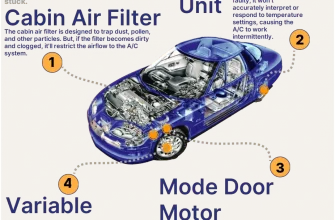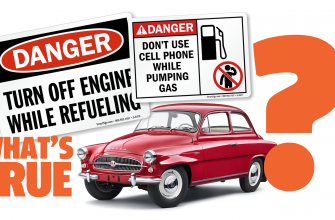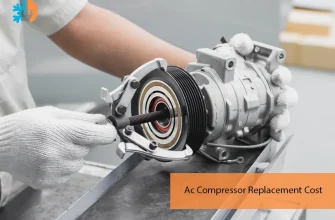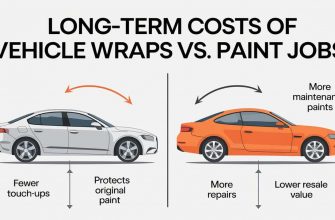When it comes to selecting a utility vehicle, one of the most crucial decisions revolves around the drivetrain: 4×2 or 4×4. Each option has its own set of advantages and disadvantages, tailored to different needs and lifestyles. This article will explore the key differences between 4×2 and 4×4 vehicles, helping you make an informed decision that aligns with your requirements.
- Understanding Drivetrain Configurations
- Pros and Cons of 4×2 Vehicles
- Pros:
- Cons:
- Pros and Cons of 4×4 Vehicles
- Choosing the Right Drive for Your Needs
- Long-Term Use and Resale Value
- Insurance and Financing Costs
- Environmental Impact
- Test Drives and Real-World Experience
- Future Adventures and Lifestyle Changes
Understanding Drivetrain Configurations
The drivetrain configuration of a vehicle refers to how power is transmitted from the engine to the wheels. Here’s a breakdown of the two configurations:
- 4×2: In a 4×2 vehicle, power is sent to two wheels (either the front or rear). This configuration is typically lighter and more fuel-efficient, making it ideal for city driving and light off-road use.
- 4×4: A 4×4 vehicle distributes power to all four wheels, enhancing traction and stability on varied terrains. This makes it a preferred choice for off-road enthusiasts and those who frequently encounter adverse driving conditions.
Pros and Cons of 4×2 Vehicles
4×2 vehicles are often the go-to option for urban dwellers or those who do not require heavy-duty performance. Here are some pros and cons:
Pros:
- Fuel Efficiency: Generally, 4×2 vehicles consume less fuel compared to their 4×4 counterparts, making them more economical for daily commuting.
- Lighter Weight: With fewer components, 4×2 vehicles are lighter, enhancing handling and maneuverability.
- Lower Maintenance Costs: Fewer parts mean reduced wear and tear, leading to lower maintenance costs over time.
Cons:
- Limited Off-Road Capability: 4×2 vehicles can struggle in off-road conditions or on slippery surfaces, limiting their versatility.
- Less Traction: If you often drive in rain or snow, a 4×2 may not provide the traction needed for safe driving.
Pros and Cons of 4×4 Vehicles
4×4 vehicles are designed for those who need superior traction and off-road capability. Let’s look at the advantages and disadvantages:
- Superior Traction: 4×4 vehicles excel in off-road conditions, providing the grip needed for rough terrains.
- Enhanced Stability: With power distributed to all four wheels, these vehicles offer a more stable ride, particularly in adverse weather conditions.
- Versatility: Ideal for adventure seekers, 4x4s can handle anything from mountain trails to muddy backroads.
- Fuel Consumption: 4×4 vehicles typically consume more fuel, which can impact your budget if used as daily drivers.
- Increased Weight: The added components for 4×4 systems can make the vehicle heavier, affecting acceleration and handling.
- Higher Maintenance Costs: More complex systems can lead to increased maintenance and repair costs over time.
Choosing the Right Drive for Your Needs
Ultimately, the choice between a 4×2 and a 4×4 vehicle will depend on your specific needs:
- Daily Commuting: If your primary use is commuting in urban settings with occasional light off-road driving, a 4×2 vehicle may be sufficient.
- Adventure and Off-Roading: If you enjoy outdoor activities and require a vehicle capable of handling rough terrains, a 4×4 is the better choice.
- Weather Conditions: Consider the weather in your area; if you face heavy rain or snow, a 4×4 can provide the necessary traction for safety.
As you weigh the options between 4×2 and 4×4 vehicles, it’s essential to consider not just your current needs but also how your lifestyle might evolve. Here are some additional factors to think about:
Long-Term Use and Resale Value
Investing in a vehicle is often a significant financial commitment. Therefore, think about how long you plan to keep the vehicle and its potential resale value. 4×4 vehicles, due to their rugged capabilities, may hold their value better in markets where off-roading is popular. Conversely, 4×2 vehicles might appeal more to the average commuter, possibly leading to quicker resale in urban markets.
Insurance and Financing Costs
Insurance rates can vary significantly based on the type of vehicle and its intended use. Generally, 4x4s may have higher insurance premiums due to their off-road capabilities and potential for more substantial repairs. Additionally, financing options might differ, so it’s wise to compare rates and terms. Always factor in these potential costs when determining your budget.
Environmental Impact
In today’s eco-conscious world, it’s worth considering the environmental impact of your vehicle choice. 4×2 vehicles typically have better fuel efficiency and lower emissions, making them a more environmentally friendly option for daily driving. If sustainability is a priority for you, this might be an influential factor in your decision-making process.
Test Drives and Real-World Experience
Nothing beats hands-on experience. Before making a decision, schedule test drives for both 4×2 and 4×4 vehicles. Pay attention to how each feels in different driving conditions, whether it’s smooth urban roads or rugged, unpaved paths. Consider bringing along family or friends to get their impressions as well, as their feedback can provide valuable insights.
Future Adventures and Lifestyle Changes
Think about any upcoming changes in your lifestyle that may require a different vehicle. Are you planning to embark on cross-country road trips? Maybe you’re considering taking up outdoor hobbies like camping, hiking, or skiing. If you anticipate needing a vehicle that can handle varying terrains and provide the versatility for outdoor activities, a 4×4 might be the way to go.
Choosing between a 4×2 and a 4×4 utility vehicle is more than just a decision about drivetrain; it’s about aligning your vehicle with your lifestyle, values, and future aspirations. Assess your driving habits, consider your budget, and think about the adventures that lie ahead. By taking the time to weigh all these factors, you can ensure that your choice will not only meet your current needs but also serve you well in the years to come.
Remember, whether you ultimately choose the efficiency of a 4×2 or the rugged capability of a 4×4, your vehicle should be a reflection of who you are and where you want to go. Happy driving!









The explanation of off-road capabilities was particularly useful. I have a better idea of what I need for my lifestyle now.
Great insights on fuel efficiency! I was leaning towards a 4×2, and this article solidified my choice. Thanks for sharing!
I appreciate how this article breaks down the drivetrain configurations. It really helped me understand the differences better!
I love how straightforward this article is. It made comparing 4×2 vs 4×4 simple and easy to understand!
This article provides a clear and concise comparison between 4×2 and 4×4 vehicles. I found the pros and cons very helpful in making my decision!
Fantastic read! The breakdown of maintenance costs was eye-opening. Definitely considering a 4×2 for my next vehicle.